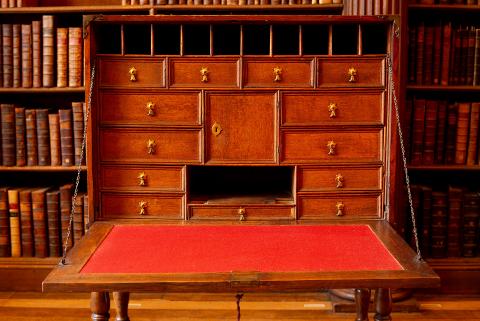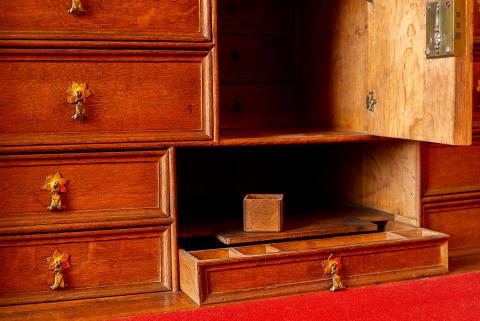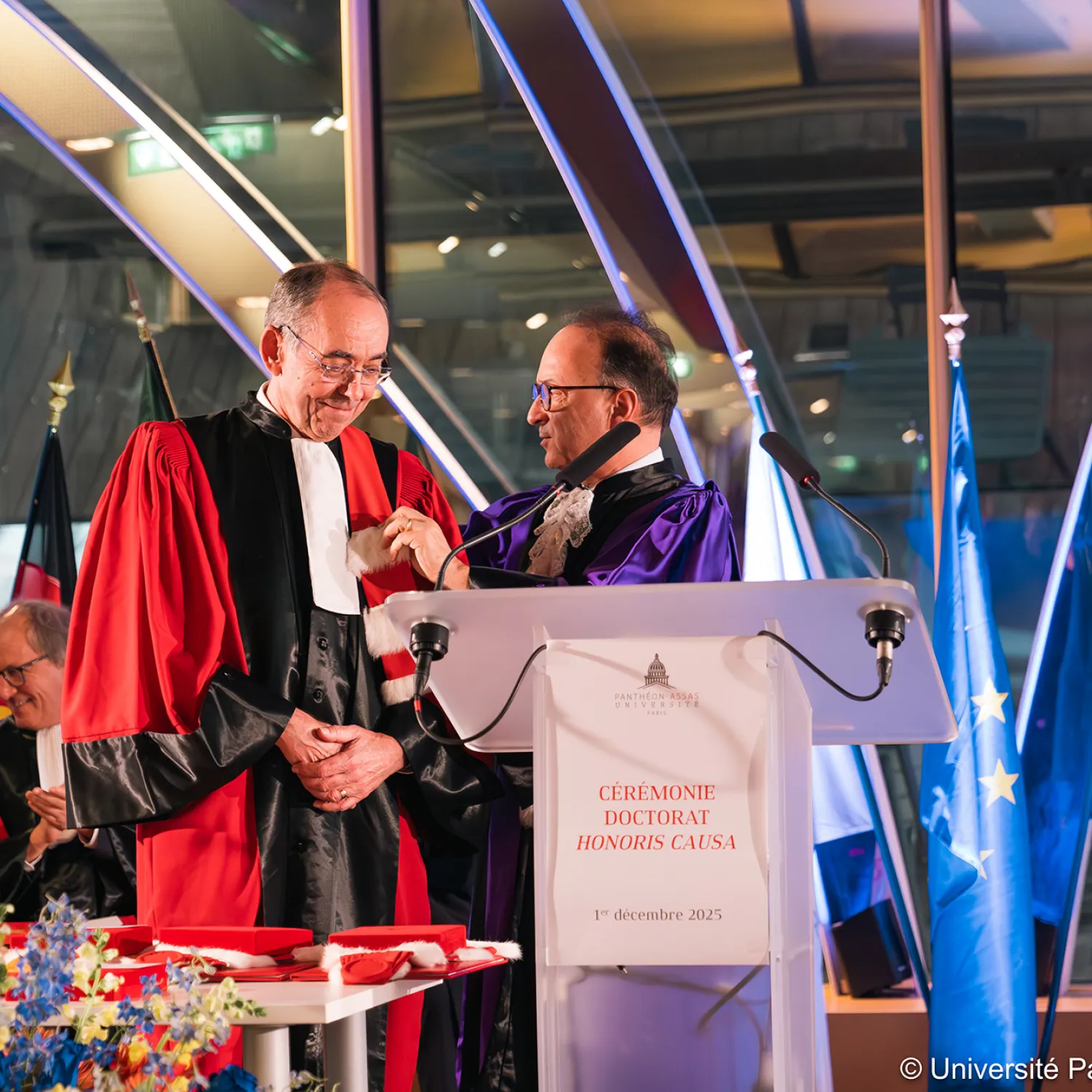Breadcrumb
Locke’s desk – centrepiece of our Library exhibition
The current exhibition in the Upper Library, “To love truth for truth’s sake”: John Locke and Christ Church, contains many fascinating items, but the star of the show is John Locke’s desk. Lindsay Judson, Emeritus Student and Professor of Ancient Philosophy, unlocks the story behind the escritoire of one of the Enlightenment’s most influential thinkers.
Locke designed a number of pieces of furniture and other items, and was extremely particular about their design and their being made ‘in the right way’, but this is the only such item known to have survived. Locke’s design and dimensions for its pigeonholes and drawers, down to the last half-inch, are also preserved. It was made by a London joiner, Edward Vernon, probably in the first half of 1673, for Locke’s study in the Earl of Shaftesbury’s house on the Strand; Locke moved there in 1667 after his election to a permanent Christ Church Studentship (fellowship) at on the instruction of Charles II, which meant that he had no need to continue living in Oxford. So Locke never had the desk in Christ Church. Locke disputed the bill for the desk and for a number of other items, and a mediator was brought in (transcriptions of some of the relevant documents are in the exhibition). He eventually paid £7 rather than the £8 originally asked for – by way of comparison, in 1691 Locke paid the celebrated Mr Tompion £11 for a watch.

The desk has 10 pigeonholes and 16 drawers – three behind an internal lockable door. Although Locke no doubt used it for writing, and referred to it as ‘my scrutor’ or ‘scriptor’ (variants of ‘escritoire’, or writing desk), its primary function was to hold in a highly organised way his many unbound papers, meticulously arranged by subject and made into tightly sealed packets endorsed with the subject on the outside.

The writing surface could be closed up and locked, and it was equipped with sturdy carrying handles, but Locke never took it with him on his travels, nor on his self-imposed exile in Holland after the failure of the Rye House Plot of 1683 – a plan to assassinate Charles II and his Catholic brother and heir to the throne. (Although it is unclear whether or not Locke was involved in this plot, Charles certainly thought that he was, and in the following year ordered Christ Church to deprive Locke of his Studentship, in a document on display in the exhibition.) Instead, Locke left the desk in one place in London, and the key in another. Thus he writes to a friend in 1694:
My Cosin Bonville who brings you this will with it deliver you a key sealed up which is the key of my Scrutor at my Lodging, which I must desire you to open and in the second drawer of the upper row you will finde a great number of acquittances filed togeather, amongst them I must desire you to looke out the last of those that Mr Fox who is Collector for the tax gave Mr Pawling for my tax […].
After the Glorious Revolution of 1689, Locke returned to England; from 1691 until his death in 1704 he was a paying lodger in the home of Damaris and Francis Masham in Oates in Essex (Locke and Damaris Masham had exchanged frequent, lightly coded and highly affectionate letters for the preceding decade). The desk was installed in Locke’s study-bedroom, and at his death contained over two and a half thousand letters addressed to Locke, 150 draft replies, and about a thousand other loose papers – including Edward Vernon’s bill and the mediator’s letters.
The desk is a great treasure in itself – one of Christ Church’s best treasures – but its chief importance lies in the fact that it is thanks to the desk that this cornucopia of papers has survived: it is the earliest collection of personal papers of an English intellectual. Locke’s heir, Peter King, and his descendants (who in the 19th century became the Earls of Lovelace) took great pride in this ensemble of desk and papers, and showed it off to visitors in the succession of country houses they occupied, in Surrey and subsequently in Loch Torridon in Scotland. After nearly 240 years, in 1942, the ‘Lovelace Collection’ of Locke’s papers found a new home in the Bodleian Library.
In 1960, the American millionaire Paul Mellon bought the desk and a large number of Locke’s books. The desk travelled first by train from Scotland and then in the strongroom of the ocean liner Queen Mary to Mellon’s house in Virginia. Just a few years later Mellon gave the desk to Christ Church, and it arrived in 1964. Despite our stormy relationship with Locke, this is clearly the place for it. I have looked after the desk, researched its history, and shown it to Locke scholars for the best part of two decades; on my retirement as Official Student in Philosophy the desk has been moved to the magnificent setting of the Upper Library.
Professor Lindsay Judson
Our current Upper Library exhibition, “To love truth for truth’s sake”: John Locke and Christ Church, can be viewed on Wednesdays between 1pm and 4pm until 14 January (with the exception of 24 and 31 December).
Other Christ Church news



